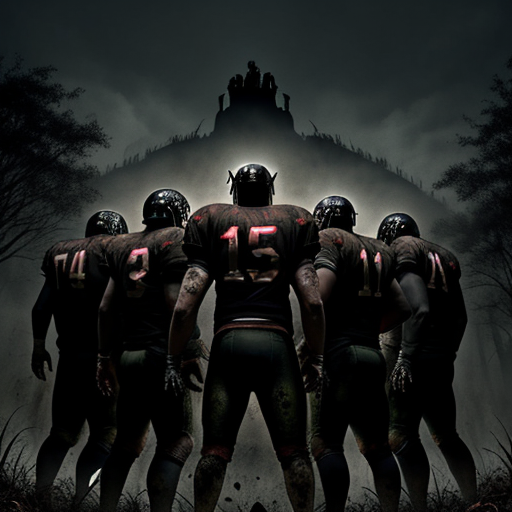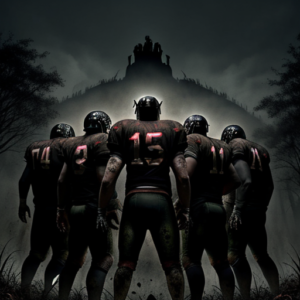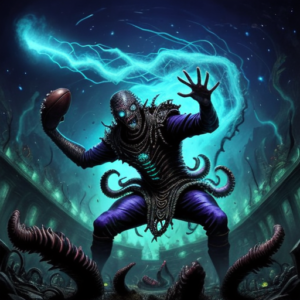The Sunday Main Slate features an interesting mix of 11 games on DraftKings and FanDuel this week. The slate peaks at a less robust point than the past few weeks, with the Cardinals and Rams squaring off in a game that sits at 49 points in Vegas followed by a 47.5-point total between the Panthers and Dolphins. Both of those games could wind up somewhat lopsided, though we favor the Cardinals in a game with a 7-point spread over the 14-point underdog Panthers when looking for run-back teams that may hang in the game for a while. The slate craters to a season-low 35.5-point total in the game between the 49ers and Browns in what is expected to be a windy and rainy mess in Cleveland, and the average game total is 43 points with only the Dolphins pulling down an implied team total above 30. There should be plenty of fantasy scoring to fill lineups, the Dolphins naturally look terrific in projections, as do the Rams, Bengals, and Jaguars, as some of our favored stacks of the week.
This article focuses on building lineups with a quality foundation by utilizing the powerful Groups and Rules/Limits tools within the industry’s optimization tools. All of the concepts and pairings included below can be applied to hand-building as well. The goal is to create lineups that have high-scoring correlation and take advantage of combined outcomes within stacks while limiting the likelihood of building inefficient or negatively correlated entries for a full slate of NFL DFS lineups.
This video was made in a former life and features a detailed demonstration of how to apply these concepts in one leading optimizer tool: Fantasy Cruncher – How-To Video
All references to Sims were done via friends of the site: acemind.io
Don’t miss the new Above/Below feature article for a few of our top picks
Catch up on Saturday’s game-by-game breakdown of every little piece of the slate, you may need 1.5x speed if you’re starting this Sunday morning!
Week 6 DraftKings & FanDuel NFL DFS Stack Rankings
The following stack rankings were created by pairing each team quarterback with his top three scoring options, whether they are three wide receivers, two wide receivers and a tight end, a wide receiver, tight end, and running back, or any viable combination. In some cases, an expensive running back, such as Tony Pollard, can push the overall price point of his team stack in the value rankings.
| TEAM | OPP | FD$ | FDpRank | FDvalRank | DK$ | DkpRank | DKvalRank |
|---|---|---|---|---|---|---|---|
| HOU | JAC | $30,500 | 1 | 1 | $27,600 | 1 | 4 |
| CIN | CAR | $31,300 | 2 | 8 | $26,100 | 2 | 3 |
| ARI | WAS | $29,700 | 3 | 3 | $25,000 | 3 | 1 |
| PHI | TB | $31,600 | 4 | 16 | $25,300 | 5 | 5 |
| SF | NE | $31,600 | 5 | 17 | $26,200 | 6 | 12 |
| MIN | GB | $30,100 | 6 | 12 | $25,900 | 4 | 7 |
| BAL | BUF | $30,000 | 7 | 14 | $0 | 0 | 0 |
| NYJ | DEN | $28,800 | 8 | 5 | $25,200 | 7 | 6 |
| BUF | BAL | $29,100 | 9 | 6 | $0 | 0 | 0 |
| KC | LAC | $29,000 | 10 | 7 | $25,600 | 9 | 14 |
| NO | ATL | $29,200 | 11 | 11 | $25,500 | 8 | 10 |
| WAS | ARI | $26,900 | 12 | 4 | $22,200 | 13 | 2 |
| GB | MIN | $26,200 | 13 | 2 | $23,600 | 12 | 8 |
| TB | PHI | $28,900 | 14 | 19 | $26,200 | 10 | 19 |
| ATL | NO | $27,700 | 15 | 15 | $23,800 | 11 | 9 |
| CLE | LV | $25,400 | 16 | 10 | $22,600 | 16 | 13 |
| IND | PIT | $27,100 | 17 | 21 | $24,400 | 15 | 20 |
| JAC | HOU | $25,500 | 18 | 13 | $23,300 | 14 | 16 |
| CHI | LAR | $26,200 | 19 | 20 | $23,600 | 17 | 18 |
| LAR | CHI | $26,100 | 20 | 23 | $22,800 | 20 | 22 |
| LV | CLE | $23,900 | 21 | 9 | $21,600 | 18 | 15 |
| PIT | IND | $24,500 | 22 | 18 | $20,700 | 19 | 11 |
| CAR | CIN | $24,900 | 23 | 22 | $21,400 | 21 | 17 |
| LAC | KC | $25,700 | 24 | 26 | $21,500 | 22 | 24 |
| DEN | NYJ | $22,800 | 25 | 24 | $19,900 | 23 | 21 |
| NE | SF | $23,600 | 26 | 25 | $19,900 | 24 | 23 |
Week 6 DraftKings & FanDuel NFL DFS Stacks & Optimizer Groups
Overview
Rules and limits are powerful tools for lineup creation for NFL DFS where our primary focus is creating highly correlated lineups via stacking players from the same game. Lineups will typically be coordinated around the quarterback selection, which informs at least one pass-catcher choice, establishes a budget, eliminates a defense, and sets the tone for the lineup. We will typically look to correlate a quarterback and at least one of his pass-catchers in every lineup, with most of those including a skill player from the opposing team who will have a chance to support the stack in a high-scoring game that drives offense on both sides to create additional correlated scoring potential. Stacking multiple pass-catchers in the same lineup is a sound approach as well, though there are typically overall ceilings on how much volume is available at any given position. We do not typically include running backs who are not pass-catchers as priorities in NFL DFS groups, they typically stand alone with the selection of the quarterback-based stack informing remaining salary which then informs the running back selections. High-volume backs and pass catchers out of the backfield can be included in the groups utilized below, but it is frequently not necessary to do so with the very best players, they arrive in lineups without help.
The following rules and limits are typically applied in an optimizer’s Advanced Options menu. Notes are included to elucidate the reasons behind each rule and to explain what it does during the lineup creation process. These settings can typically be saved for re-use, which is highly recommended. Saving the Week 1 groups that will be created below is also a very good idea to save time with updates instead of recreation each week. These groups are created manually, but most optimizers include automated group creators that can help accelerate the curation process.
DraftKings + FanDuel Settings & Advanced Options
Unique Players Per Lineup– This setting forces the optimizer to utilize at least X new players who were not in Lineup 1 when it creates Lineup 2, and so on. It is recommended to utilize at least two, and more can be applied depending on the degree of differentiation desired within lineups.
Team Salary– a minimum or maximum salary spend can be applied here as needed, though this is not a part of the recommended process in this space as leaving salary on the table is an easy path toward creating unique lineups while not necessarily making a negative expected value play.
FLEX position– allows restrictions on what positions can be rostered at the FLEX spot. The only position to consider in this case is tight end, but that is something to be restricted at the individual level via Groups, rather than at the global level.
Global Exposure Setting – allows caps on the maximum percentage of lineups a player can appear in within a given pool of lineup construction. This is a powerful tool for shaping lineups but if settings are too low attempts to build a full set will fall short due to a lack of available players, one of the most common errors in optimizer building. Most optimizers include the ability to calculate ownership caps continuously or at the end of the pool creation process. If caps are calculated continuously, a player with a 25% cap who is utilized in Lineup 1 will not be available for use again until Lineup 5 , we recommend turning OFF continuous calculation.
Randomness – provides a random multiplier to each player’s projected point total based on the set values. This is a valuable tool that helps differentiate lineups instead of simply creating them in order of highest median projected scores. Using some randomness for lineup generation is strongly recommended but the degree to which it is applied is down to personal preference, but 15-25% is fine to get started. We suggest heavier randomness to more event-based players like wide receivers while tracking volume-based positions like running backs more toward their median or ceiling projections.
DraftKings + FanDuel Team Stack Rules
This set of rules will force optimizers to build lineups with certain combinations. We are looking to stack at least one skill player, almost always a pass-catcher, with his quarterback while also playing a skill player from the opposing team in the lineup. The theory behind this build is that a high-scoring stack will require some response from the opposing team to deliver a ceiling score in most situations. When that is not the case, the team that is winning will simply slow down and run out the clock. Most optimizers utilize a “complete the sentence” approach for rule creation with selections from drop-down menus following a very straightforward logic. Exceptions to these rules can be added for specific teams and players on most optimizer products.
- QB with at least one WR/TE from Same Team (note: It is fine to set this to two or to utilize two versions of this rule, one with WR/TE and one with RB/WR/TE, but we refine this via Groups)
- QB with at least one RB/WR/TE from the Opposing Team (we typically prefer the pass-catchers but high-volume running backs can be effective here)
- QB with at most zero DST from the Same Team (this is a personal preference; high-scoring teams and quarterbacks tend to leave their defenses on the field, exposing them to simple point-scoring negatives)
Limits & Custom Rules and Requirements
Limit rules can be applied to restrict certain combinations from coming together. This is powerful for limiting multiple running backs from the same team or getting overweight to a certain stack within a lineup.
- Limit QB/RB/WR/TE from Same Team to three
- Limit RB/WR/TE from the Same Team to one unless paired with QB from the Same Team OR the Opposing Team
- Limit RB from Same Team to one (we also do this with WR in a separate rule that adds an “unless paired with QB or opposing QB” but it’s a personal preference for NFL DFS, we typically do not want two pass-catchers from the same team without their quarterback)
We will maintain the list of rules and limits throughout the season, with occasional tweaks, if needed. Each week sees yet another fresh crop of value plays as situations change and injuries create opportunities around the league. These changing roles and emergent value plays are accounted for in the process of creating these groups from week to week. After a large pool of lineups is created utilizing these groups, it is still of critical importance to filter them for factors including ceiling projections and leverage potential. These groups should help ensure that a highly correlated premium set of options that rotates through a variety of combinations is utilized to create the full lineup pool.
Sunday Updates
Any changes and recommended boosts to specific players will be provided in an early morning update each Sunday.
NFL DFS Week 6 Features & FREE Projections
- Week 6 FanDuel & DraftKings Projections – FREE
- Week 6 Above/Below – Key Picks
- Week 6 Quarterback Scoring & Value Rankings
- Week 6 Running Back Scoring & Value Rankings
- Week 6 Pass-Catcher Scoring & Value Rankings
- Week 6 Defense Scoring & Value Rankings
Construction Concept
Team groups are built by utilizing the quarterback as the KEY player in group settings. The quarterback decision in each lineup is the driving factor in which stack is utilized in that lineup and which corresponding plays are then made to work within the structure and requirements. Built to specification, each team will have two groups, a team group, and an opponent group, both of which utilize the same quarterback as the key player. Each game will have a total of four groups. This is the best approach to truly capture the requirement of playing individual “run-back” plays from the opposing team. A more basic approach would be to include all of the skill players from a game in each quarterback’s group and rely on rules and limits to restrict any potential overflow. It is highly recommended to save the Week 1 groups as a foundation that will be updated for the rest of the season. The recommended groups will include skill players who have an active role in their offense and provide significant correlation with their quarterback’s scoring, often bell-cow running backs who do not specialize in the passing game will not be included in groups as they are projected highly and appear on their own in basically correct distributions, while also not always providing the strongest positive correlation plays. Stacking quarterbacks with pass-catchers and allowing running backs to fall into the lanes then created by settings, available salary, and randomness should create a well-distributed set of quality lineups. These groups are updated weekly to account for changes in utilization, schemes, injuries, target shares, and more.
Team Groups for DraftKings & FanDuel – Week 6 – Coming Early Saturday
The goal is to create a large pool of well-built lineups that can be utilized in any large-field GPP contest. Our approach is to build far more lineups than needed and utilize a sorting table or sim process to filter to the best set of lineups for entries. The lineups created in these crunches should provide a broad distribution that includes some of the lower-owned high-upside skill players from each stack. Applying boosts is critical in pushing and pulling ownership to individual players within their team’s stacked lineups if they are appearing too much or too little.
The groups below are designed so that each quarterback will have two groups to create, one with his skill players and another with the opposing team. A more basic approach would be to add them all to one large group with an “at least three” and let rules and limits set things, but there is a more granular level of control in creating them separately.
Utilizing two groups also allows us to place running backs into the “run-back” position in certain teams while not including them in the primary stack for their team. This is useful when there is a situation with an extremely highly projected running back who does not necessarily fit into his team’s passing game. These players are threaded throughout the following construction recommendations.
Note for the Rotogrinders optimizer, we recommend trimming the automatically created groups that can be accessed under Team Groups, Opponent Groups, and Max Position Groups to match these groups for lineup building. We typically utilize the Stacks tab to enforce constructions as well, but a key requirement is missed in the automated groups. The Max Position groups need the manual addition of the running backs and tight ends to the group that is created with the wide receivers with a setting of max 1 and the team’s quarterback selected as a key player with the designation of using that group when the quarterback is NOT in the lineup. This is done to eliminate the possibility of three skill players from the same team appearing at running back, tight end, and wide receiver together without their quarterback involved. A simple limit of three players per team will keep things to just a quarterback with two skill players in stacks after that. Update: if one were to reset their saved settings on RG’s optimizer new options will reveal themselves, including thankfully a toggle to take care of this from the main build rules page. There is also a non-QB group with a max-1 setting that works better for this purpose because the toggle on the main page will limit stacks to just a 1-1 combination, seemingly as a bug.
Arizona Cardinals
Key Player: Joshua Dobbs
Setting: at least one
Team Group: Marquise Brown (Q), Zach Ertz, Rondale Moore, Michael Wilson
Opposing Setting: at most one (this can be set to exactly one to ensure a Rams bring-back player)
Opposing Group: Cooper Kupp, Puka Nacua, Tutu Atwell, Kyren Williams, Tyler Higbee
Lineup Notes: Marquise Brown’s Q-tag is due to illness earlier in the week, he seems likely to play. The Arizona stack and Joshua Dobbs are a high points-per-dollar value option on both sites, they will have an opportunity to keep pace with the Rams in what could be a shootout game. Dobbs stacks show strong returns across tens of thousands of simulated slates including more than a million lineups. The Arizona ground game will be focused on undrafted rookie Emari Demarcado and Keaontay Ingram, neither of whom have seen much work to this point in the season. Zach Ertz is a strong value option at TE. The Rams offer several significant bring-back options.
Atlanta Falcons
Key Player: Desmond Ridder
Setting: exactly one
Team Group: Bijan Robinson, Drake London, Kyle Pitts, Jonnu Smith, Van Jefferson (large field dart throw at best), Mack Hollins (large field dart throw at best)
Opposing Setting: at most one
Opposing Group: Terry McLaurin, Jahan Dotson, Curtis Samuel, Logan Thomas
Lineup Notes: we prefer the Falcons for individual skill players more than as a team stack, they have high-end options available in either form but the stacks will have to rely on shaky quarterback Desmond Ridder, who has a light projection on both sites. Bijan Robinson, Drake London, and Kyle Pitts are all playable individuals and the top priority skill players in any Falcons stack. We will take minor shares of Tyler Allgeier but not in stacks. The Commanders have a few viable bring-back options with Brian Robinson Jr., Terry Mclaurin, Drake London, Curtis Samuel, and Logan Thomas all qualifying.
Carolina Panthers
Key Player: Bryce Young
Setting: at least one
Team Group: Adam Thielen, DJ Chark Jr., Jonathan Mingo, Hayden Hurst, Chuba Hubbard, Laviska Shenault Jr. (large field dart), Terrace Mashall Jr. (large field dart)
Opposing Setting: exactly one (we prefer to assume that Miami will have no issues keeping pace with a Carolina stack that manages to go off for a slate-winning score, somehow, but this can be set to “at most one” to avoid requiring a bring-back play)
Opposing Group: Tyreek Hill, Jaylen Waddle, Raheem Mostert, Durham Smythe, Cedrick Wilson Jr., Chase Claypool
Lineup Notes: it is difficult to expect much from Carolina, Miles Sanders is out and Chuba Hubbard has value as the lead running back. Bryce Young will have his work cut out for him keeping up with Miami, he has a good connection with Adam Thielen, who is our top bring-back option in stacks of Dolphins, while DJ Chark Jr. is a downfield dart throw and Jonathan Mingo comes up at a value price a fair amount. Shenault and Marshall are extremely limited, with Marshall not even seeing the field and Shenault getting his work on five carries in the team’s most recent outing.
Chicago Bears
Key Player: Justin Fields
Setting: at most one
Team Group: DJ Moore, Cole Kmet, Darnell Mooney, Tyler Scott, Robert Tonyan (large field TD dependent)
Opposing Setting: at most one
Opposing Group: Jordan Addison, TJ Hockenson, KJ Osborn, Alexander Mattison
Lineup Notes: this game will have a weather impediment with rain and strong winds in the forecast, Justin Fields looks like a strong play with the Chicago backfield missing all of Khalil Herbert, Roschon Johnson, and Travis Homer, he may be both the lead running back and quarterback simultaneously for Chicago this week. DJ Moore has developed a fantastic connection with Fields, he is an excellent wide receiver pairing and Cole Kmet is the number-two priority in the offense, with the rest landing as mix-in priorities. The Vikings are limited without superstar Justin Jefferson, they have playable bring-back options available with TJ Hockenson potentially making the most interesting play.
Cincinnati Bengals
Key Player: Joe Burrow
Setting: at least one
Team Group: Ja’Marr Chase, Tee Higgins (Q), Joe Mixon, Tyler Boyd, Trenton Irwin, Irv Smith Jr.
Opposing Setting: at least one (we’re looking for the shootout with an “at least” for the bring-back play, but this can be set to “at most” to eliminate the requirement)
Opposing Group: DK Metcalf, Tyler Lockett, Jaxon Smith-Njigba, Kenneth Walker III
Lineup Notes: Joe Burrow looked back to his old self for the first time in Week 5 and, coincidentally, Ja’marr Chase had a monster three-touchdown day. The Bengals are a strong priority stack option, though Tee Higgins is questionable once again he is expected to suit up on Sunday, adding to the depth and upside of the team in what could be a shootout. There is a bit of bad weather in the area in this game and both sides have strong running back options, which could bite into passing upside, but we love the receivers on both sides and will have a healthy dose of Bengals stacks with a smaller share of Seahawks stacks and a significant number of Seattle bring-back plays.
Cleveland Browns
Key Player: PJ Walker
Setting: exactly one
Team Group: Amari Cooper, Elijah Moore, David Njoku, Donovan Peoples-Jones, Marquise Goodwin
Opposing Setting: at most one
Opposing Group: Christian McCaffrey, Deebo Samuel, Brandon Aiyuk, George Kittle
Lineup Notes: this game features a significant amount of weather, an extraordinarily low Vegas total, a backup quarterback, and two good defenses, we are a bit below industry expectations on the 49ers’ offensive output and bullish on their defense. Across FanDuel simulations of more than 1,000,000 lineups, sorted by resulting ROI%, Walker was the only quarterback who did not appear in any of the top 10,000 lineups from the sample, he is more likely to provide value for just $4,000 on the DraftKings slate.
Detroit Lions
Key Player: Jared Goff
Setting: at least one
Team Group: Amon-Ra St. Brown, Sam LaPorta (Q), Josh Reynolds, Jameson Williams, Kalif Raymond
Opposing Setting: at most one
Opposing Group: Mike Evans, Chris Godwin, Trey Palmer, Deven Thompkins, Rachaad White
Lineup Notes: Sam LaPorta is questionable but fully expected to play, Amon-Ra St. Brown should be fully back to his role as the team’s primary weapon in the passing game. David Montgomery is a solid option in and out of stacks, he should dominate the volume again. Detroit is a pricey mid-board stack with tons of skill against a decent Tampa pass defense. The Bucs provide solid bring-back options in the two primary receivers.
Houston Texans
Key Player: CJ Stroud
Setting: at least one
Team Group: Nico Collins, Robert Woods (Q), Dalton Schultz, Noah Brown
Opposing Setting: at most one
Opposing Group: Alvin Kamara, Chris Olave, Michael Thomas, Rashid Shaheed
Lineup Notes: The Texans’ surprising pass attack is going to be challenged by a tough New Orleans pass defense this week. Robert Woods is expected to play, Tank Dell is out so Woods will likely see a fair amount of targets, he is already a strong value option and the Dell absence enhances his value behind Nico Collins and ahead of Noah Brown, who will likely surpass the value of John Metchie. The Saints are a good team for skill players, they are a capable stack and they provide valuable bring-back options at a range of prices.
Indianapolis Colts
Key Player: Gardner Minshew II
Setting: at least one
Team Group: Michael Pittman Jr., Josh Downs, Kylen Granson, Zack Moss, Alec Pierce
Opposing Setting: at most one
Opposing Group: Travis Etienne Jr., Calvin Ridley, Christian Kirk, Evan Engram, Jamal Agnew
Lineup Notes: Gardner Minshew is back, replacing Anthony Richardson. Minshew has moderate appeal from the middle of the board at a fair price, his passing game weapons are strong with Pittman and Downs leading the way and Pierce providing a home run threat. The carries will be more evenly split between Jonathan Taylor and Zack Moss this week. We are hoping for strong returns from the Colts, the Jaguars are a top priority stack in our builds for Week 6 and they make excellent bring-back options in this case.
Jacksonville Jaguars
Key Player: Trevor Lawrence
Setting: at least one
Team Group: Travis Etienne Jr., Calvin Ridley, Christian Kirk, Evan Engram, Jamal Agnew
Opposing Setting: at most one
Opposing Group: Michael Pittman Jr., Josh Downs, Kylen Granson, Zack Moss, Alec Pierce, Jonathan Taylor
Lineup Notes: the Jaguars are one of our top-ranked and favored stacks of the week and Trevor Lawrence is the leading quarterback in simulations in a tight race with Tua Tagovailoa. Lawrence has excellent options to work with and the Jaguars project extremely well as a stack and as a points-per-dollar option on both sites. The Colts provide several good bring-back options in this construction and the rule can be set to “exactly” one in both this lineup and the previous build on the other side if needed.
Los Angeles Rams
Key Player: Matthew Stafford
Setting: at least one
Team Group: Cooper Kupp, Puka Nacua, Tutu Atwell, Kyren Williams, Tyler Higbee
Opposing Setting: at most one
Opposing Group: Marquise Brown (Q), Zach Ertz, Rondale Moore, Michael Wilson
Lineup Notes: Stafford + 2 stacks are fine in this offense, they are primed to throw and they should see an uptick in passing touchdowns as the season normalizes over the next few weeks. The Cardinals will have to keep pace to pay this stack off in full, but the Rams rank very well in projections and as a stack on both sites, they have excellent receivers with the potential for a value-based Tutu Atwell to steal the show at lower ownership than his more justifiably far more expensive colleagues Puka Nacua and Cooper Kupp, both of whom saw tremendous target volume in Kupp’s return last week. Kyren Williams is a solid volume-based running back option.
Las Vegas Raiders
Key Player: Jimmy Garoppolo
Setting: at least one
Team Group: Davante Adams, Jakobi Meyers, Josh Jacobs, Austin Hooper, Hunter Renfrow
Opposing Setting: at most one
Opposing Group: Rhamondre Stevenson, Kendrick Bourne, DeVante Parker, Hunter Henry
Lineup Notes: the Raiders are another team that is stronger as a source of good skill players with Adams, Meyers, and Jacobs all as high-priority individuals. Stacks of Raiders appear less frequently at the top of sims than the individuals do on their own throughout. The Patriots have been inept on offense and they are limited for bring-back value.
Miami Dolphins
Key Player: Tua Tagovailoa
Setting: at least one
Team Group: Tyreek Hill, Jaylen Waddle, Raheem Mostert, Durham Smythe, Cedrick Wilson Jr., Chase Claypool
Opposing Setting: at most one
Opposing Group: Adam Thielen, DJ Chark Jr., Jonathan Mingo, Hayden Hurst, Chuba Hubbard
Lineup Notes: the Dolphins are one of the top priority stacks of the week, they project at the top of the board by raw fantasy points on both sites in a pushover matchup against the Panthers. Tua Tagovailoa is a frequent resident in the top lineups in our extensive simulations, he is joined frequently by his top three skill players. The Panthers have interesting bring-back options at fair prices to help average down the cost of Dolphins stacks on the other side.
Minnesota Vikings
Key Player: Kirk Cousins
Setting: at least one
Team Group: TJ Hockenson, Jordan Addison, KJ Osborn, Alexander Mattison, Brandon Powell
Opposing Setting: at most one
Opposing Group: DJ Moore, Cole Kmet, Darnell Mooney
Lineup Notes: Losing Justin Jefferson is a massive blow to the Vikings’ frisky passing attack and the value of Kirk Cousins, they will be hard-pressed to reach previous fantasy scoring potential, but they remain a mid-level option across the board on the talent of their remaining receivers and tight end. The Bears are a strong bring-back squad with DJ Moore and Cole Kmet offering positional flexibility, but Justin Fields is always a threat to do all of the scoring on his own.
New England Patriots
Key Player: Mac Jones
Setting: exactly one
Team Group: Rhamondre Stevenson, Kendrick Bourne, DeVante Parker, Hunter Henry, Kayshon Boutte, Jalen Reagor (large field dart who may not play)
Opposing Setting: at most one
Opposing Group: Davante Adams, Jakobi Meyers, Josh Jacobs, Austin Hooper, Hunter Renfrow
Lineup Notes: The Patriots have been pathetic lately, scoring just 18 total points over the past three games, for perspective, Bears receiver DJ Moore has 30 points in the same stretch on his own. Mac Jones has not finished a game since Week 3, the team has gotten nothing from last year’s star rusher Rhamondre Stevenson or this year’s signee Ezekiel Elliot on the ground, and their options through the air are so thin that this week’s reinforcements include Kayshon Boutte, Jalen Reagor, and Malik Cunningham who will operate as a receiver but is eligible only at quarterback on both sites, removing him from competition. The Raiders have strong bring-back skill player options.
New Orleans Saints
Key Player: Derek Carr
Setting: at least one
Team Group: Alvin Kamara, Chris Olave, Michael Thomas, Rashid Shaheed, Foster Moreau
Opposing Setting: at most one
Opposing Group: Nico Collins, Robert Woods (Q), Dalton Schultz, Noah Brown
Lineup Notes: if the Saints’ typically good pass defense fails this game could turn into a strong source of fantasy scoring with interesting skill players on all side, regardless of Houston’s performance at least the group of the top three Saints options should all be playable as individuals.
New York Jets
Key Player: Zach Wilson
Setting: exactly one
Team Group: Breece Hall, Garrett Wilson, Allen Lazard, Tyler Conklin
Opposing Setting: at most one
Opposing Group: AJ Brown, Devonta Smith, D’Andre Swift, Dallas Goedert, Olamide Zaccheaus
Lineup Notes: the Jets are bad on offense and limited by Zach Wilson in most situations, even in recent weeks. Breece Hall is the focal point, he received a full workload and delivered a huge game in Week 5, he will have to carry the Jets to productivity in this matchup as well. Garrett Wilson has been middling of late with Wilson dragging him down, Lazard is the only other viable Jets receiver with Conklin as a fairly interesting value tight end. Brown, Smith, Swift, and Goedert all make good bring-back options.
Philadelphia Eagles
Key Player: Jalen Hurts
Setting: at least one
Team Group: AJ Brown, Devonta Smith, D’Andre Swift, Dallas Goedert, Olamide Zaccheaus
Opposing Setting: at most one
Opposing Group: Breece Hall, Garrett Wilson, Allen Lazard, Tyler Conklin
Lineup Notes: the Jets will be without star corner Sauce Gardner this week and Jalen Hurts projects well, though he lands a point or two behind industry-average projections in our model against what is still a decent Jets pass defense. Hurts has terrific individual upside and four dynamic skill players in Brown, Smith, Swift, and Goedert while Olamide Zaccheaus should see an increased role with Quez Watkins out again this week after a one-week return last week that limited Zaccheaus. The Jets truly appealing bring back options are Hall and Garrett Wilson.
Seattle Seahawks
Key Player: Geno Smith
Setting: at least one
Team Group: DK Metcalf, Tyler Lockett, Jaxon Smith-Njigba, Kenneth Walker III, Noah Fant
Opposing Setting: at least one (we’re looking for the shootout with an “at least” for the bring-back play, but this can be set to “at most” to eliminate the requirement)
Opposing Group: Ja’Marr Chase, Tee Higgins (Q), Joe Mixon, Tyler Boyd, Trenton Irwin, Irv Smith Jr.
Lineup Notes: Walker is a strong running back option in a good matchup and a game that may have some weather impact, he could ruin the day for those of us looking for a bit of a high-flying game in this matchup. Walker should be played in all formats, he can be utilized in stacks and as an individual. The Seahawks 1/1A receiving weapons are both excellent options but Jaxon Smith-Njigba has not shown any downfield acumen to this point, he has been limited for fantasy output.
San Francisco 49ers
Key Player: Brock Purdy
Setting: at least one
Team Group: Christian McCaffrey, Deebo Samuel, Brandon Aiyuk, George Kittle, Jauan Jennings
Opposing Setting: at most one
Opposing Group: Amari Cooper, Elijah Moore, David Njoku, Donovan Peoples-Jones, Marquise Goodwin
Lineup Notes: this game features a significant amount of weather, a meager Vegas total, a backup quarterback, and two good defenses, we are a bit below industry expectations on the 49ers’ offensive output and bullish on their defense.
Tampa Bay Buccaneers
Key Player: Baker Mayfield
Setting: at least one
Team Group: Mike Evans, Chris Godwin, Trey Palmer, Deven Thompkins, Rachaad White
Opposing Setting: at most one
Opposing Group: Amon-Ra St. Brown, Sam LaPorta (Q), Josh Reynolds, Jameson Williams, Kalif Raymond
Lineup Notes: Baker Mayfield has not been bad to star the season and he has a connection with Mike Evans. Chris Godwin is a strong second receiver option in this offense and he provides good value in a game that could have sneaky potential if Tampa Bay can overcome the aggressive Lions defense, the Detroit options are not the issue, Tampa Bay will have to hang in the game and do some early scoring to keep up and provide fantasy scoring.
Washington Commanders
Key Player: Sam Howell
Setting: at least one
Team Group: Terry McLaurin, Jahan Dotson, Curtis Samuel, Logan Thomas
Opposing Setting: at most one
Opposing Group: Bijan Robinson, Drake London, Kyle Pitts, Jonnu Smith
Lineup Notes: The Washington side of this game is also better for individuals than as a stack, though Sam Howell projects as a slightly better option than his opponent. Howell will be working with strong options in Terry McLaurin, Jahan Dotson, and Curtis Samuel, as well as tight end Logan Thomas and good hands out of the backfield. The Washington stack is the more appealing of these two, but we generally prefer simply blending the strong skill player options into lineups.
Follow Us on Twitter. Join us in Discord. Subscribe to the YouTube Channel.









